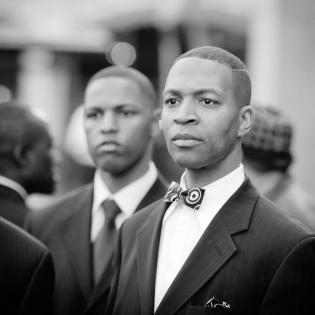Promote Nonviolence
Young people discuss the need for and examples of nonviolent conflict resolution. They promote the idea of taking action for change by organizing a rally for nonviolence.
The learner will:
- organize and sponsor a rally for nonviolence.
- service: to provide a community or organization with something that it needs
- nonviolence: the principle of refraining from using violence, especially as a means of protest
- advocacy: active verbal support for a cause or position
Lee, Harper. To Kill a Mockingbird. Harper Perennial Modern Classics, 2006. ISBN-13: 978-0061120084
Instructions
Anticipatory Set:
Talk about how big changes in history were started, such as abolition and the Civil Rights Movement. Often big changes in laws and government come about because people took action through advocacy and the nonprofit sector. Young people can act as advocates to raise awareness about the issue of violence in our society.
Discuss what forms violence show up at school or in the community and world and how people can respond with nonviolence. They may bring up school shootings and how the Parkland students spoke up and protested in Washington, D.C. They may bring up arguments and fights on campus or in the neighborhood and brainstorm conflict resolution skills. These guides may facilitate Civiliity and Civil Conversations or Critical Conversations. They can read about the strategies of nonviolent marches and sit-ins in the news, like the women's marches and Black Lives Matter demonstrations around the U.S.
Discussion:
- Violence and the mob mentality make people lose their individuality when part of a group. Why are individuals far less apt to do the things that mobs do? What examples of this have you seen?
- In the book, To Kill a Mockingbird, Atticus says, "most people are [nice], Scout, when you finally see them." Discuss what he means by this statement. What are examples of "seeing people"? Do you agree that most people are nice once you “see” them? How can good people do things that seem bad?
- What personal values help people deal with sensitive topics?
- Have young people brainstorm ways to support peers who encounter violence or bullying.
An anti-violence rally is a great way to bring a large number of people together to learn more about the importance of peace and a specific call to action. The community, politicians, and businesses will be sent a clear message about the importance of the action you want to see.
Planning Elements:
- Recruit a team to organize the event. These people can help make flyers and signs to get the word out.
- Brainstorm and research with the team to come up with slogans.
- Pick an area that can hold a lot of people. Call the local police station to find out if you need a permit. It's always in your best interest to keep the police well informed and to cooperate with them.
- Recruit a panel of inspiring, well-rounded experts to speak at the event and bring insights, stories and perspectives.
- Chants, music, performances, and street art can also make a rally much more enjoyable and generally more noteworthy. You may want some "pre-rally" entertainment, such as a band or a dramatic performance.
- Make sure there's a schedule of events. Ensure that your speakers are ready and know how long they can talk. Make sure you have all the right permits with the police and community development groups.
- Have flyers handy with some facts about your cause and create some extra signs for people to hold.
Philanthropy Framework
-
Strand PHIL.I Definitions of Philanthropy
-
Standard DP 02. Roles of Government, Business, and Philanthropy
-
Benchmark HS.6 Describe how the civil society sector is often the origin of new ideas, projects and innovation and social renewal.
-
Benchmark HS.7 Describe how the civil society sector provides mediation for individuals and governments.
-
-
-
Strand PHIL.II Philanthropy and Civil Society
-
Standard PCS 05. Philanthropy and Government
-
Benchmark HS.3 Identify the relationship between individual rights and community responsibilities.
-
-
-
Strand PHIL.III Philanthropy and the Individual
-
Standard PI 01. Reasons for Individual Philanthropy
-
Benchmark HS.1 Define and give examples of motivations for giving and serving.
-
Benchmark HS.4 Cite historical examples of citizen actions that affected the common good.
-
-
-
Strand PHIL.IV Volunteering and Service
-
Standard VS 03. Providing Service
-
Benchmark HS.1 Provide a needed service.
-
Benchmark HS.2 Describe the goals of the project and their impact.
-
Benchmark HS.4 Demonstrate the skills needed for the successful performance of the volunteer job.
-
-
Standard VS 05. Integrating the Service Experience into Learning
-
Benchmark HS.2 Evaluate progress on the service-learning project before, during, and after the project.
-
-
